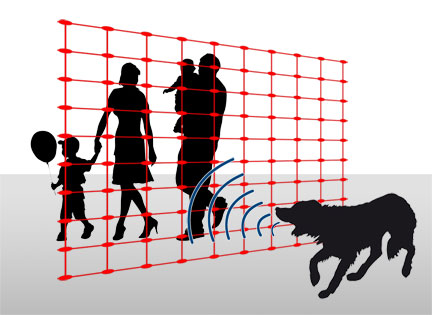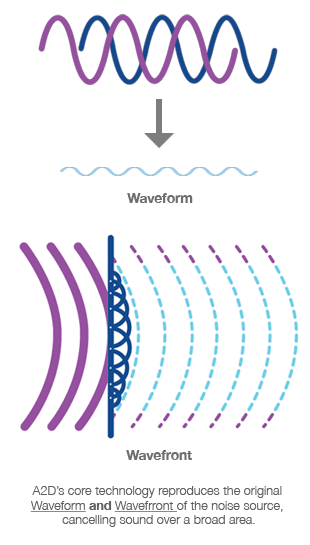It's a Noisy World, and It's Getting Worse
Which is why we are doing something about it. Noise can be traffic, machinery in the workplace, airports or simply neighbors and people living and working too close as the world becomes more crowded. There is a limit to how much noise people can take before it goes beyond an annoyance to become a major and life-changing environmental pollution. Some important facts:
• Noise increases 6% every year: Our world is twice as noisy now as it was 20 years ago
• Unwanted sound lowers property values and hinders new development
• In many places private conversations are mandatory, yet impossible
• Noise is bad for health and well being
• New federal standards (HIPPA, LEED & OSHA) are setting environmental regulations for sound quality, privacy and safety
AAD has developed technologies that greatly reduce sound in a way never before considered feasible, creating 3-dimensional spatial zones of quiet, in any size from a baby incubator to an airport runway.
The Technology

The concept of sound cancellation is not new. Many people have experienced sound canceling headphones, originally developed for helicopter pilots, and now commonly used by passengers on airplanes to help insulate them from the noise of air travel. The idea is simple: pick up a sound with a microphone, amplify it and add it back to the original sound out of phase, as a negative of the original sound, canceling out the original sound. The idea is simple, but not easy. Beyond headphones, sound cancellation has had limited success. That's because sound out in the open is very complex and 3-dimensional, which the sound canceling system must replicate. Conventional noise cancellation systems have been encumbered by the need for vast amounts of computing power; besides the expense, these systems have been relegated to reducing only low frequencies and the hum of some machinery.
 AAD takes a fresh look at what is needed to eliminate all types of sound over a broad area defined by the user. Called Open Air Sound Interception System, (OASIS), it is possible for the first time to cancel voices and any random sound in real time, by intercepting noise on its way to the area needing to be quieted (the quiet zone). It can take the form of a thin, open grid work, or frame, or simply placed on the top of a wall. It is scalable: it can be made small enough for a baby's hospital bed, or large enough for airport use.
AAD takes a fresh look at what is needed to eliminate all types of sound over a broad area defined by the user. Called Open Air Sound Interception System, (OASIS), it is possible for the first time to cancel voices and any random sound in real time, by intercepting noise on its way to the area needing to be quieted (the quiet zone). It can take the form of a thin, open grid work, or frame, or simply placed on the top of a wall. It is scalable: it can be made small enough for a baby's hospital bed, or large enough for airport use.
OASIS accomplishes this level of cancellation where other systems cannot through physical acoustics, not just computer processing. Unique microphone and speaker systems, covered in our intellectual property, do most of the work of recreating the wave front, as well as the wave form of the complex soundfield where they are placed.
Applications
OASIS has applications as wide and varied as the problem of noise itself. Professionals in many fields have expressed great interest in applying our technology to their many current problems. Here is a brief list of applications:
Health: Hospital Intensive Care Units, in particular Neonatal Intensive Care Units (NICU)'s, where AAD is developing a solution for the NIH to the problem of damage to the developing newborn’s nervous system due to excess noise in the hospital environment. Noise levels increasing steadily for years have been taken for granted as part of our world, until the evidence compiled by many concerned health care professionals has pointed to the damage done to newborns.
Transportation noise, from airports to high speed rail to highway noise. All of these have a common set of effects: reduction of the well being of the populace, disruption of neighborhoods and entire towns, and a tremendous lowering of property values in affected communities. OASIS could quiet the noise of highways that cut through cities and towns; allow high speed rail easier access to communities; and alleviate the well documented cost that airports and jet noise have incurred on municipal areas near the all too common city-based airport.
Speech privacy to keep conversations private in hospitals, banks, or anywhere sensitive personal information is exchanged. Such privacy is increasingly being mandated by law, yet nearly impossible to effect without resorting to bricks and mortar walls and barriers.
Residences and commercial buildings can be fitted with noise-canceling windows and fencing, creating quiet zones in open air spaces as well as interiors.
Company Status
Athanas Acoustic Devices has filed ground-breaking patents and put together a core team with expertise in acoustics, noise, and product development. We are working to help the NIH to solve the problem of NICU noise damage to newborns. We are in continuing discussions with the DOT and the FAA. Officials with the FAA have stated that “this would be a Godsend” to the FAA and communities near airports. You too may think of a use for sound cancellation in your own home or town. The improvement on quality of life is potentially profound.
We are currently seeking partnerships with businesses and government to develop real solutions to noise and privacy issues that until now have simply been accepted as part of modern life.
Oasis Core Team Member
Thomas Miller: CTO
SBEE-MIT, MS Acoustics-Harvard, MA Applied Math - Penn State, MBA-Babson
Manager Loudspeaker Development - Bose, VP Acoustics - Racal Acoustics, Naval Ordinance Lab (NOL), Engineering Program Manager-DBX Developer: DBX-Soundfield, Racal Acoustics-Noise Canceling Headsets
